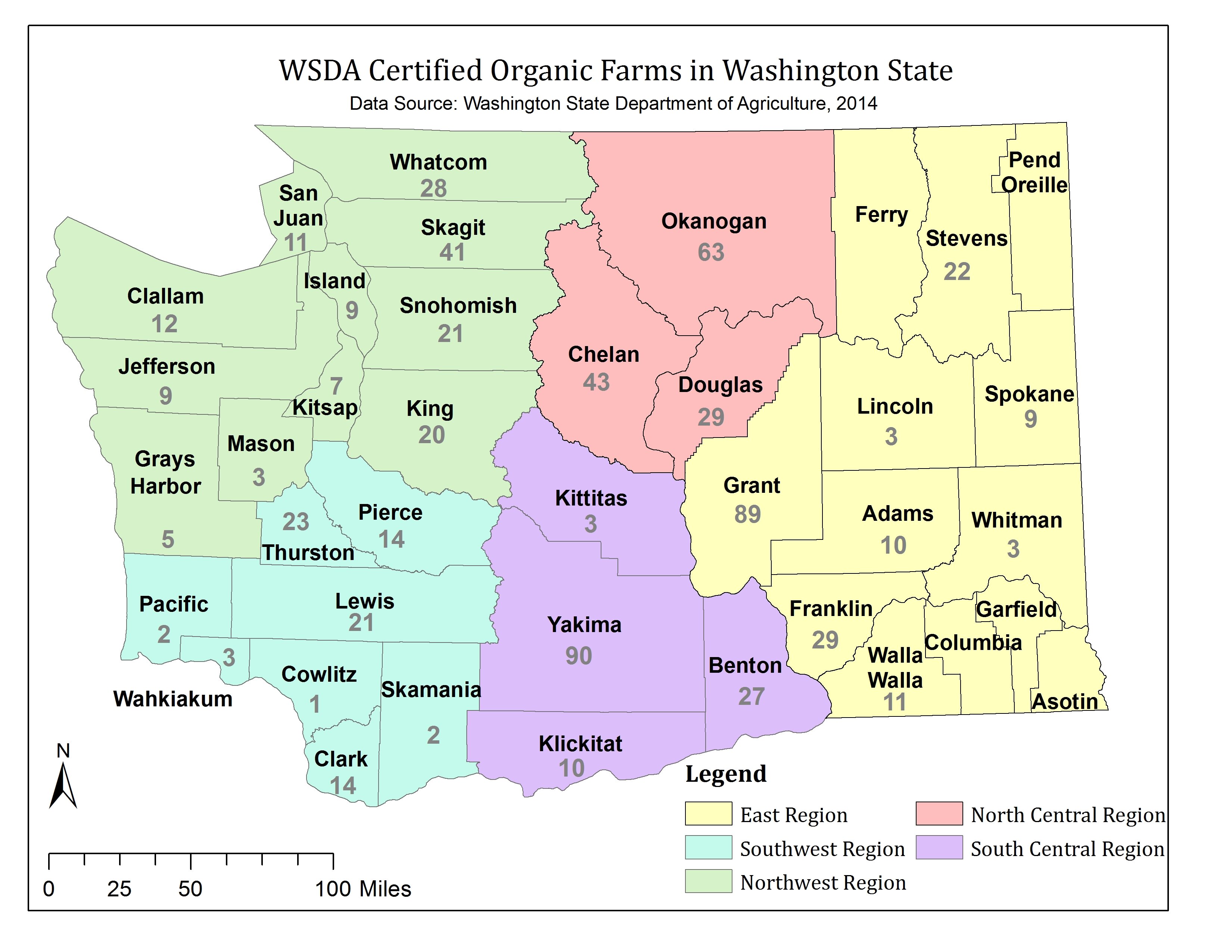Bounded by the Pacific Ocean on the west, Puget Sound on the north, the Cascade Mountains on the east, and the Columbia River on the south, this lush corner of Washington has a dynamic organic foods movement

The region has the moist, mild, maritime climate that characterizes western Washington and Oregon, with annual precipitation ranging from 80” to 100” inches along the coast and western slopes of the Cascades, to 40” to 60” in the inland valleys. Major rivers include the Chehalis, Cowlitz, Deschutes, Lewis, Naselle, Nisqually, Puyallup, and Willapa.
Historically the region has supported thriving fisheries, timber and agricultural industries, and farming remains a major part of local economies. There are now food cooperatives in Tacoma, Olympia and Vancouver, plus a growing network of farmers markets in communities throughout the area.
Southwest Washington has 87 certified organic farms with a total of 9,706 acres of land in organic production. The chart shows the number of certified organic farms and acreage in organic production in each county. Organic farms in Southwest Washington generated $13.2 million in sales in 2011.
Vegetables thrive in the fertile valleys of Southwest Washington, including beets, broccoli, cabbage, carrots, celery, chard, culinary and medicinal herbs, eggplant, garlic, green and dry beans, lettuce, melons, mustards, onions, peas, peppers, potatoes, rhubarb, spinach, summer and winter squash, sweet corn, and tomatoes. Vegetable seeds are also an increasingly important product for several farmers.
A surprising variety of tree fruits also thrive in the region, including apples, apricots, Asian pears, cherries, figs, pears, plums, and peaches.
Berry lovers can find certified organic blueberries, red currents, raspberries, blackberries, boysenberries, gooseberries, mulberries, and strawberries. The Long Beach Peninsula in Pacific County is one of the nation’s leading centers for cranberry production and some new farmers there are establishing Washington’s first organic cranberry bogs.
In addition to tree fruits and berries, several varieties of kiwi and table and wine grapes are also well adapted to the area. Farmers are also growing nut trees, including English walnuts, chestnuts, hardy northern almonds, hazelnuts, and hickory nuts.
Dairies have long been a major part of agriculture in the region, and today there are nine certified organic dairies in southwest Washington. Pastures and forage crops such as alfalfa, grass hay, and silage corn are important crops for dairy farmers. Other livestock raised in the region include beef cattle, goats, hogs, sheep, turkeys, and chickens both for meat and eggs.
Several counties in the region are under significant pressure from increased urbanization. Population growth is especially impacting farmland in Pierce, Thurston and Clark counties. In several communities the increase in the number of organic farms is playing an important role in helping preserve agricultural land. Significant examples include the Nisqually Basin near Olympia and the Puyallup Valley near Orting, where the PCC Farmland Trust helped preserve more than 100 acres of prime agricultural land.
Source: WSU CSANR
Learn about Tilth Producers member farms listed in our directory
Southwest Washington Farm Profile – Tahoma Farms
Resources for Organic Farming
in Southwest Washington
Clark County Food System Council
Southwest Washington CSA Farms
WSU Puyallup – Organic Farming Systems



